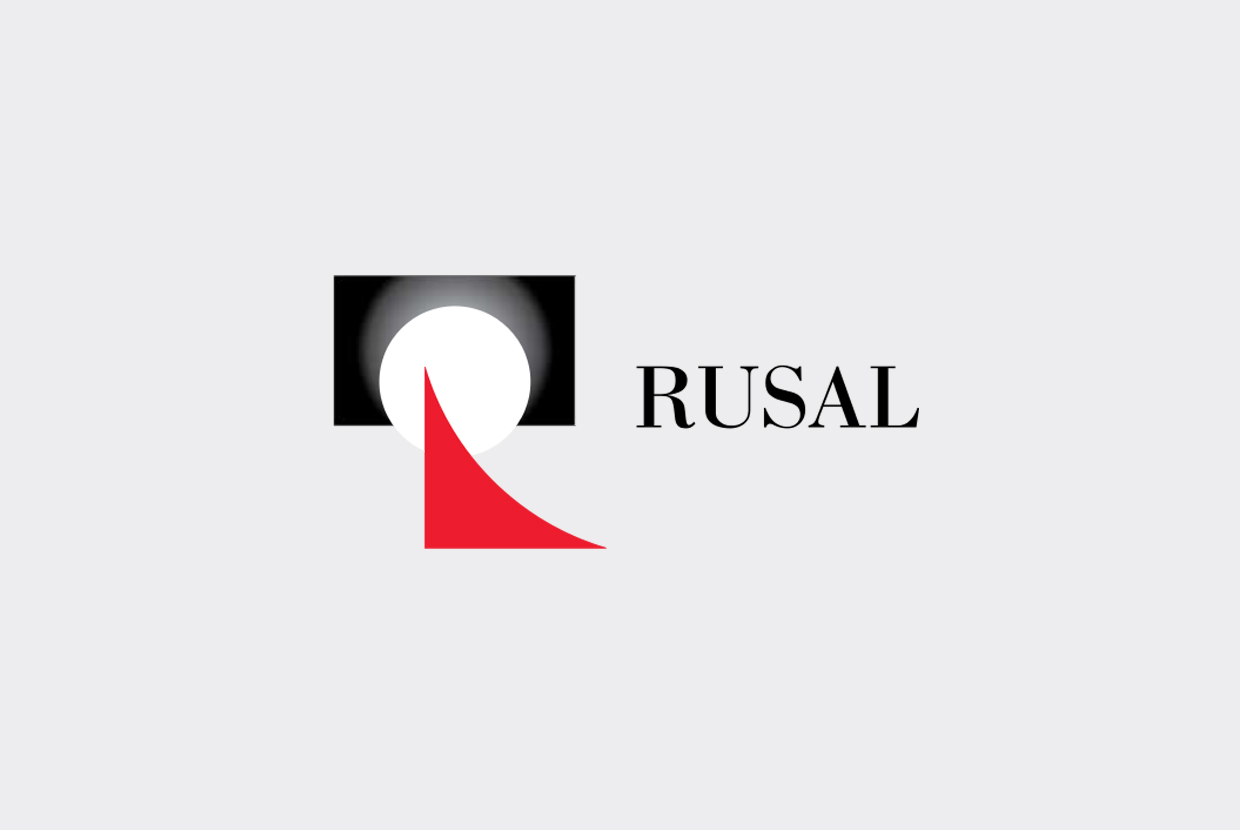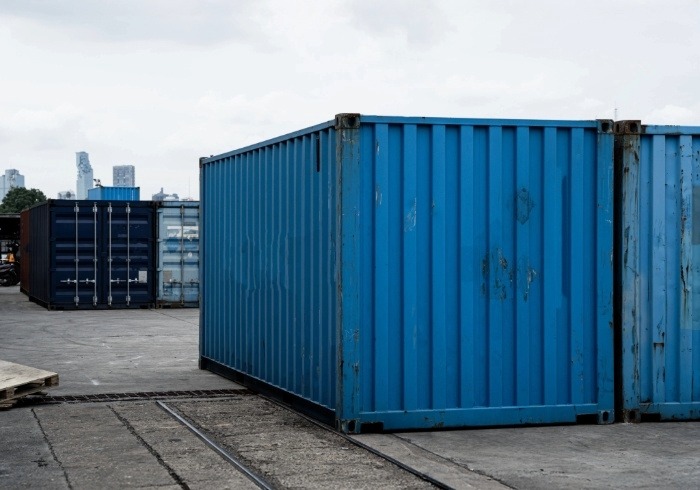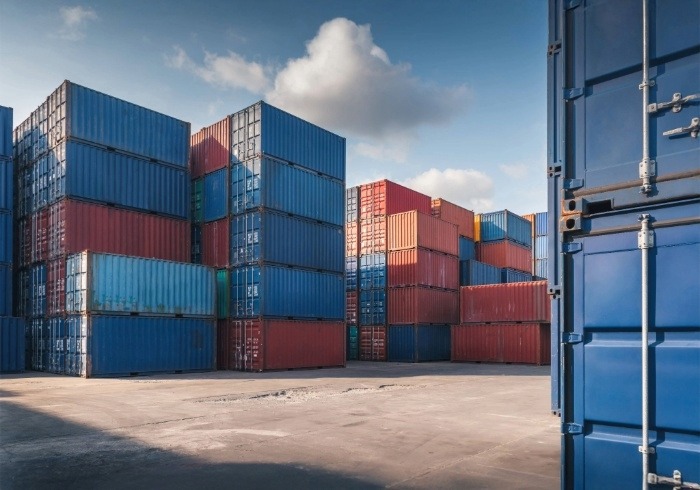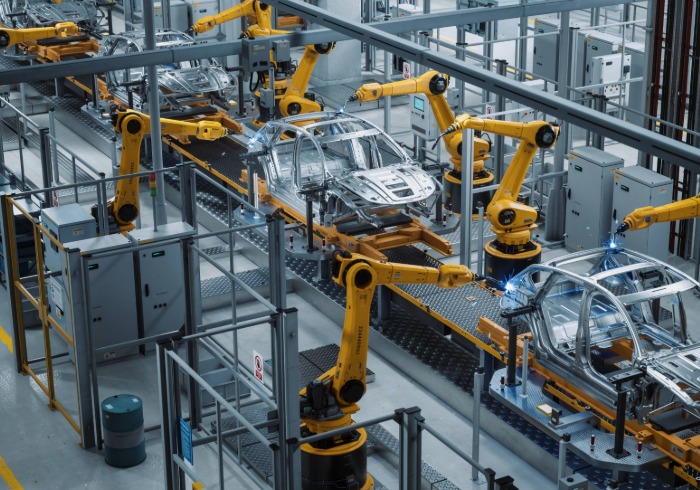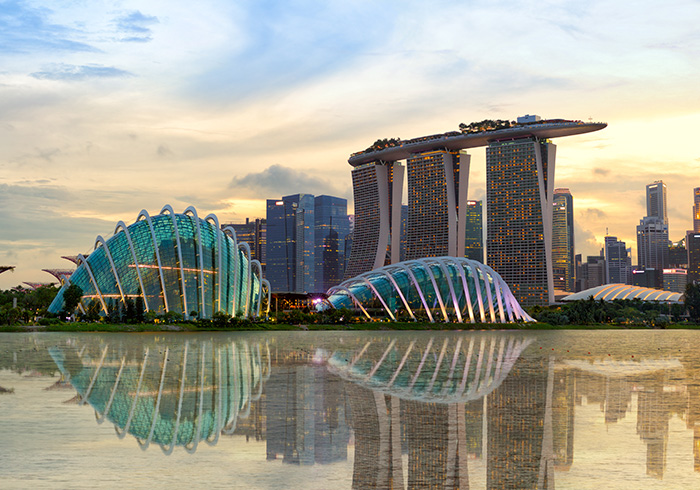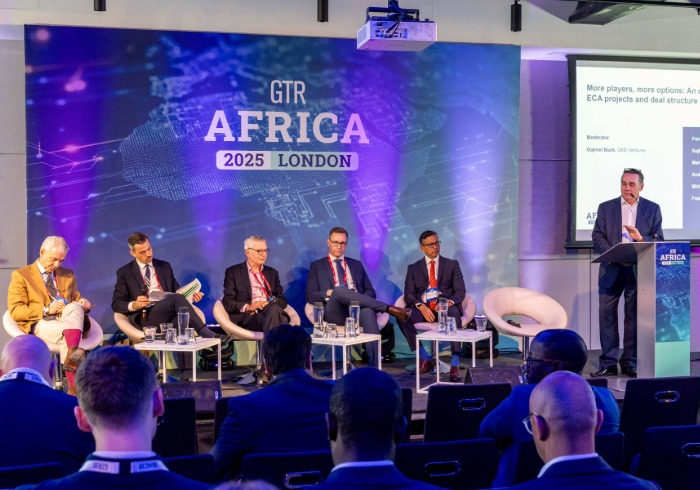Leading aluminium
As the world’s largest aluminium producer nears inception, Rusal’s CFO Vladislav Soloviev explains the company’s background, structure, expansion plans and financing opportunities
The appeal of being the global leader in aluminium production is undeniable for Rusal. With an output of 2.7mn tonnes last year, Rusal produced 75% of Russia’s primary aluminium – contributing 10% of the world’s primary output as the world’s third largest producer. Yet a major step was taken towards becoming the largest producer in October 2006, when the company announced a merger deal with its smaller domestic competitor, Sual, as well as with the Swiss commodity trader Glencore International.
The three parties expect to complete the deal by April 1, 2007 – subject to the approval of antitrust regulators in Russia and a number of other countries – to combine their assets and become the world’s largest aluminium producer, at an estimated value of US$25bn-30bn. The United Company Rusal will produce 4mn metric tons of aluminium (or 12.5% of the world output) and 11mn tons of alumina (16%) annually. It will also employ more than 110,000 people in 17 countries stretched over five continents.
By merging their assets, Rusal, Sual Group and Glencore International will complement each other perfectly. Sual has large holdings of bauxite, the raw material used to make aluminium. Glencore will provide large amounts of alumina. And Rusal brings great strength in primary aluminium production, advanced technology, and its access to competitively priced electricity – a core cost for aluminium production and a key competitive advantage for Rusal on the world stage.
The deal essentially reunites Russia’s aluminium industry after its carve-up during the chaotic privatisations of the 1990s following the collapse of the Soviet Union. The agreement also calls for the transformation of the new company into a public entity through an initial public offering (IPO) on the London Stock Exchange, to be completed within three years from the date of the deal’s closing.
Roots based on satisfying internal demand
Rusal was established in 2000 through the merger of several of the largest aluminium smelters and alumina refineries in the CIS, belonging to the shareholders of Sibirsky Aluminium (since renamed Basic Element) and Sibneft. By that time the Russian aluminium industry, like the majority of previously Soviet-controlled businesses, was founded on satisfying internal demand, mainly from the military.
Russia was fortunate to possess large hydro-electric potential and, as a consequence, its energy-intensive aluminium industry was born. The hydropower located in eastern Siberia was harnessed to serve the giant Bratsk and Krasnoyarsk plants which are still, respectively, the first and second largest aluminium plants in the world today.
Alumina for the refineries was transported by rail from the distant Ural Mountains, while the bauxite to make the alumina was mined in the Urals and the northwest of the country. Overall, there was not enough bauxite and alumina production to meet the capacities of these aluminium smelters and it became necessary to import.
Consequently, following the establishment of the Russian Federation, the aluminium industry, like many others, had to respond to many fresh challenges. This required finding new supplies of raw materials, new production methods and, perhaps most importantly, new overseas markets.
During its early development, Rusal underwent a process of rapid consolidation, and was soon to be the only Russian metals company able to successfully unite various separate assets – both aluminium smelters and alumina refineries – into a vertically integrated company providing for the full production cycle – from bauxite mining to aluminium output.
To strengthen its base of raw materials, Rusal started seeking opportunities to expand the company’s assets abroad. The first steps of this strategy were the acquisition of Nikolayev Alumina Refinery (located in the city of Nikolayev, Ukraine) in 2000 – one of the major alumina producers in Europe with a production capacity of 1mn tonnes of alumina per annum.
The next step was taking management control of the Compagnie de Bauxite de Kindia (Guinea, Africa) in May 2001 – a bauxite-mining complex which explores one of the world’s largest known bauxite reserves. And subsequently, Rusal took over the Alumina Company of Guinea (Friguia Refinery), subsequently privatized by Rusal in April 2006, which has an estimated annual production capacity of 600,000 tonnes of alumina and 2.8mn tonnes of bauxite.
During this period, a significant marketing strategy decision was taken to switch the focus to end-user sales and increase the share of value-added products in the overall output, such as alloys.
Presently, Rusal is considering further expanding its raw materials base, fulfilling the strategy to achieve total self-sufficiency in raw materials. However, since 2000 Rusal has increased its alumina production by two and a half times to 3.9mn tonnes per year, and continues to drive output from its seven facilities worldwide, including those at Achinsk Alumina Refinery (Achinsk, Russia), Boksitogorsk Alumina Refinery (Boksitogorsk, the Saint Petersburg Region, Russia) , The Bauxite Company of Guyana and one of the company’s latest acquisitions – a 20% interest in the second largest alumina refinery in the world – Queensland Alumina Ltd (QAL), in Australia.
Modernisations and improvements
Rusal’s core products, namely primary aluminium and alloys, are presently manufactured at four plants – Bratsk, Krasnoyarsk, Sayanogorsk and Novokuznetsk located in Eastern Siberia. The company has been undertaking large-scale modernisation projects at these plants, in order to both improve output and boost efficiency.
Also, to improve the environmental performance of the smelters, three of which use Soderberg technology, Rusal launched its Environmental Care Programme which includes the transition of all potrooms to dry anode technology, the addition of an alumina power feed system in the electrolysis works, installation of new gas-purifying facilities, up-dating of the equipment at alumina smelters, and slurry pond reclamation.
Alongside these ongoing improvements, in 2002 the company established an Engineering and Technology Centre (ETC) and, two years later, incorporated The Russian National Aluminium & Magnesium Institute (VAMI) into Rusal. Together, these organisations form the engineering and technological base that helps increase the production capacity of the company’s smelters and assists in the development of initiatives that are aimed at lowering dangerous emissions.
Acquisitions and research developments
Rusal reduced its dependence on outside suppliers by acquiring a Chinese cathode plant from China’s Hongyuan Carbon Plant Co, producing 15,000 tonnes per year of cathode blocks which will provide about 50% of Rusal’s total requirements. Rusal plans to invest a further US$3mn to upgrade a new production unit and to build an additional furnace to increase this output to 25,000 tonnes per year.
Last year, Rusal signed an agreement to privatise the leading state mining company in Guyana: the Aroaima Mining Company (AMC). A subsidiary of Rusal, the Bauxite Company of Guyana Inc (BCGI), received a major part of AMC’s assets by investing US$20mn into the project.
And in 2006, Rusal also acquired its first foreign smelter, located in Nigeria. Once it is refitted and restarted next year, the Alscon smelter will contribute 150,000 tonnes output per year.
Another important development in Africa was made by Rusal in Guinea where the company acquired the state-owned ACG/Friguia bauxite and alumina complex, currently being modernised in order to almost double its production capacity.
Rusal has also made a significant acquisition in Italy, acquiring the controlling interest in Italian company, EurAllumina, which contributes an additional output of 600,000 tonnes of alumina per year.
Rusal has also been investing closer to home, improving its Siberian aluminium smelters to increase capacity and reduce environmental emissions. The four-year upgrade of the Krasnoyarsk aluminium smelter has seen the introduction of automated alumina feeders, the installation of new gas treatment equipment and the switching of production to ‘dry’ anode technology.
By the end of next year, there should be an increase of almost 10% in its aluminium production and a significant reduction of its hazardous emissions. There is also significant modernisation at Bratsk, the world’s largest aluminium smelter, to be undertaken in 2007.
Yet, on top of these developments, the most significant achievement in 2006 was the starting-up of production at the new Khakass smelter, the first smelter to be built in Russia for 20 years. This project was developed using the highest quality raw materials available to the aluminium industry, and with one of the most modern and environmentally friendly aluminium production technologies currently available – pre-baked anodes.
The Khakass smelter has a capacity of 300,000 tonnes per year and uses Rusal’s proprietary RA-300 production technology. This RA-300 technology is rated among the top three technologies in the world, producing more than 2,050 kg of aluminium daily and capable of providing high environmental indicators and KPIs. The Khakass smelter will also become one of the most environmentally-friendly aluminium production facilities in the world with a smelter gas treatment centre providing a level of technological gas treatment of at least 99.5%. The cost of this project is over US$750mn and the overall investment into local infrastructure exceeds US$21mn.
Another important accomplishment in 2006 was achieved in a downstream project, with the finishing of the full-scale modernisation programme for Armenal, aimed at establishing a full production cycle and the improvement of the quality of its foil products. Investment into this programme amounts to over US$70mn, and has enabled Rusal to start producing foil at widths of 6-9 microns, and to increase its production output to 25,000 tonnes of foil per annum.
Europe and the US are expected to become the main markets for Armenal’s products, and Rusal’s world market share of thin foil production is expected to increase by two and a half times by 2008.
While actively reviewing additional construction and development possibilities, Rusal is also continuing to develop its technological base. At the end of 2005, it launched its new RA-400 reduction cells and is now working on the development of an RA-500 cell.
Furthermore, another important issue being addressed by Rusal is the reduction of the environmental impact caused by aluminium production. Rusal is one of the world’s biggest users of Soderberg technology (so called ‘colloidal anode’s technology), and continues an environmental research programme aimed at modernising its Soderberg cells, installing additional gas treatment facilities, as well as investigating possible ways of improving the production process.
Rusal’s Engineering & Technology Centre (ETC) leads the company’s initiatives to cut emissions of volatile hydrocarbons into the atmosphere, to reduce anode paste consumption by 5-8% and to raise current density up to an unprecedented 0.88 A/sq. cm (210 kA).
The ETC recently launched a research project to design an environmentally acceptable and competitive application of Soderberg technology, to be fully developed by 2010. The colloidal anode technology will bring the quality of anode paste up to the level of pre-baked anode figures.
Marketing conditions in 2007
The past year was marked by the impact of strong demand on prices, and 2007 is set to reflect the impact of strong supply growth. Positive seasonal factors should ensure that the year will start well and carry over the demand trend from 2006, particularly in China, but prices are expected to gradually decline as the year progresses. The increase on export tax imposed by China on primary metal could contribute to an increase in stocks on the Shanghai exchange, and the significant increase in alumina availability should also underpin an increase in smelter operating rates in China. Therefore, the decline in net exports should be minimal.
Elsewhere in the world, production growth will increase from 3% in 2006 to 5.2% in 2007 as the new Khakass smelter (300ktpa) in Siberia ramps up and as Alcoa commences production at its new Fjaardal smelter (350ktpa) in Iceland. Capacity restarts in the Pacific Northwest and Ormet’s reactivation of the Hannibal smelter (270ktpa) will contribute to production growth, the emergence of a modest global surplus by the year end, and subsequently a decline in the average annual aluminium price.
Consequently, a big challenge for Rusal in 2007 lies in the area of diversifying the business. As a part of its expansion strategy, Rusal is successfully further expanding into the energy market. For example, Rusal signed an agreement with RAO UES in May 2006 for the construction of the Boguchanskoye Energy and Metals Complex, including the construction of the Boguchanskaya 3,000MW Hydro Power Plant and an aluminium smelter with the capacity of 600kt per year in the Krasnoyarsk region.
In 2006, Rusal also established a joint working group with the Queensland State Government to develop power projects in Australia. The group will form the basis for cooperation in exploring opportunities for the potential development of an aluminium smelter in the region and the associated base-load generating capacity using alternative fuels.
Working with partner banks
Now, clearly it is vital for Rusal to obtain the right financing arrangements for the various projects it undertakes and other working capital requirements it has. The group uses various sources to finance its projects, including Rusal’s own capital, secured loans and corporate bonds. As you would then expect, Rusal enjoys a strong relationship with a number of leading international banks. Natixis, for instance, has been involved in every one of the debt facilities arranged for Rusal since its formation in 2000. Subsequently, BNP Paribas, Citigroup and Calyon, among others, have all also been mandated on a number of occasions as arrangers of Rusal’s debt facilities.
In 2002, Natixis arranged the first pre-production domestic facility ever raised in Russia – for a total of US$25mn, secured via the assignment of alumina sales contracts from Sual to Rusal. This form of financing was not popular at the time, but it was well suited to Rusal’s own situation. Natixis’s commitment and flexibility in finding such a structure cemented Rusal’s important relationship with them, and, as such, Natixis has taken a leading role in every facility Rusal has sought in the years since.
More recently, Rusal has been tapping into the pre-export finance market to obtain larger facilities and longer tenors, as its capex and working capital requirements have become more extensive.
A good example of this is the US$2bn facility arranged by Natixis, Bank of Tokyo-Mitsubishi UFJ (BTMU), BNP-Paribas, Citibank, Calyon and ABN AMRO in July 2006 – split into two lengthy tranches of five and seven years. The market raised approximately US$2.6bn in this syndication – such was the popularity of the deal – following Rusal’s initial request for US$1.5bn. This is one of the largest pre-export deals to be signed anywhere in the world this year, and it is the largest pre-export facility ever to be raised in the metals and mining industry in Russia to date.
The structure of this deal, and of several other deals recently arranged for Rusal, involves the assignment of aluminium export contracts to an offtaker, capable of taking delivery of the physical material should circumstances require. This security provides the necessary comfort for our lenders to underwrite such large facilities – and the fact that Natixis itself owns an offtaker, Contango, adds additional flexibility to the structuring process.
In addition, Rusal is actively developing its potential for public/private partnerships. The project for Lower Angara region development – which includes the completion of the 3,000MW Boguchanskaya Hydro Power Plant and the construction of an aluminium smelter – has received financial support from the Russia Investment Fund. The Russia Investment Fund will finance the works necessary to build the infrastructure, to an amount of Rb34.41bn (US$1.3bn).



